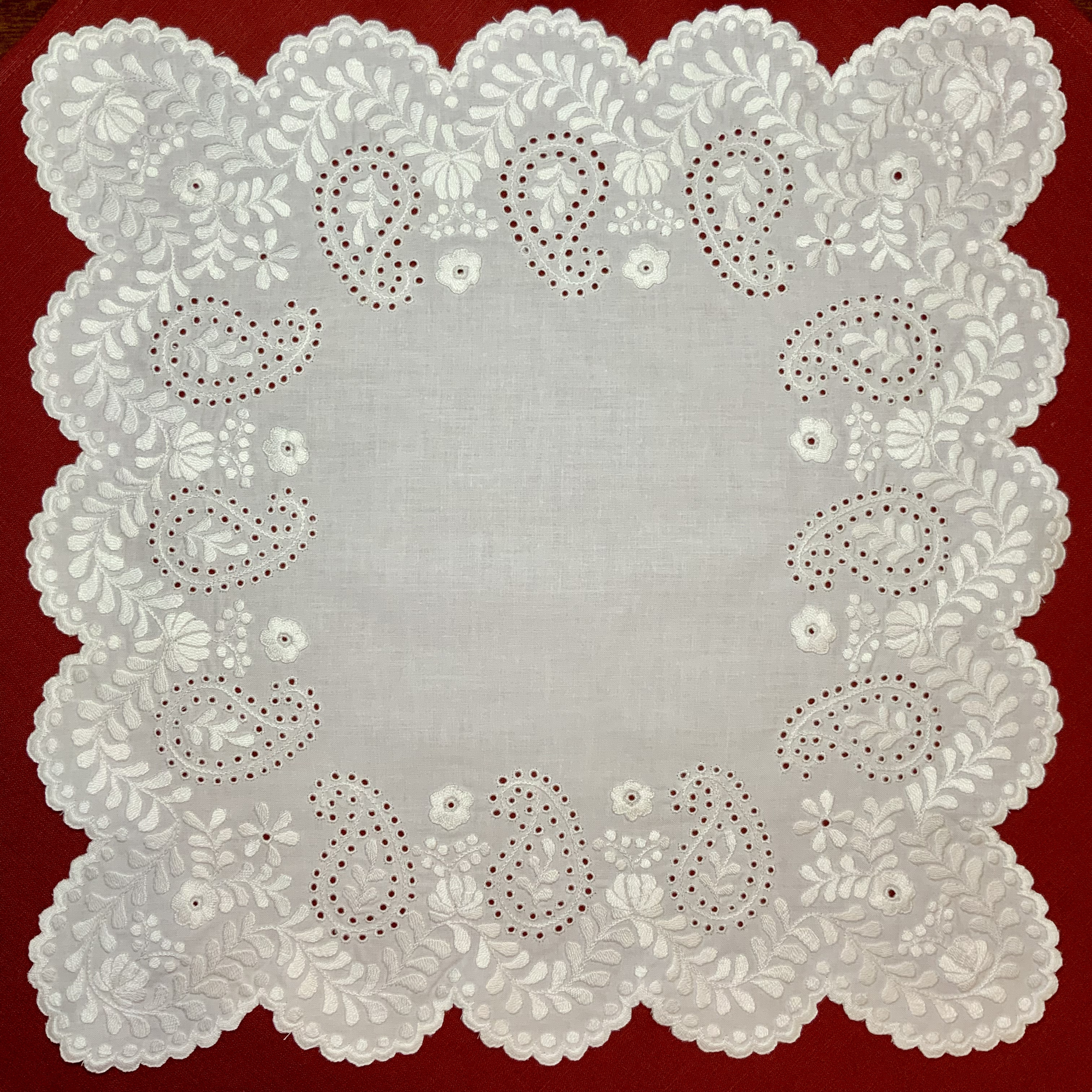„Körtés" lyukhímzés / "Pear" embroidery
A mintát a fő motívumnak számító, a világ sok táján használt „palmetta” motívum helyi elnevezése alapján „körtés” mintának nevezzük.
A magyar férfiviseletek egyik legkülönlegesebb darabja a „lobogós ujjú” ing. Az 1800-as évek utolsó harmadában divatba jött matyó ingek ujjának mintegy 150 cm a bősége, és látványos megjelenést biztosít viselőjének. Az ingujjak
szélét, valamint az ing mell- és vállrészét kezdetben fehér, később piros-kék-sárga fonalas hímzéssel díszítették. A legrégebbi darabokon a laposhímzés mellett hangsúlyos a lyukhímzés, amely igen szép, áttört felületet eredményez.
A mintát a fő motívumnak számító, a világ sok táján használt „palmetta” motívum helyi elnevezése alapján „körtés” mintának nevezzük, kerek és csepp alakú lyukak és a lapos hímzés összessége adja a gyönyörű végeredményt.
A hagyományos ing mellett tökéletes lehet pl. függöny díszítésére, ahol még jobban érvényesül az áttört hatás.
 One of the most unique pieces of Hungarian menswear is the "flag sleeve" shirt. Introduced in the last third of the 1800s, the 150 cm long sleeves of the Matyó shirts give the wearer a spectacular appearance. The sleeve ends and the chest and shoulders were initially decorated with white, later red, blue and yellow thread embroidery. In the oldest pieces, the embroidery is accentuated by embroidery of holes, giving a beautiful openwork finish. The pattern is called "pear", after the local name for the "palmette" motif, which is the main motif used in many parts of the world, and the combination of round and teardrop-shaped holes and flat embroidery provides a beautiful end-result. In addition to a traditional shirt, it can be perfect for decorating curtains, for example, where the openwork effect is even more pronounced.
One of the most unique pieces of Hungarian menswear is the "flag sleeve" shirt. Introduced in the last third of the 1800s, the 150 cm long sleeves of the Matyó shirts give the wearer a spectacular appearance. The sleeve ends and the chest and shoulders were initially decorated with white, later red, blue and yellow thread embroidery. In the oldest pieces, the embroidery is accentuated by embroidery of holes, giving a beautiful openwork finish. The pattern is called "pear", after the local name for the "palmette" motif, which is the main motif used in many parts of the world, and the combination of round and teardrop-shaped holes and flat embroidery provides a beautiful end-result. In addition to a traditional shirt, it can be perfect for decorating curtains, for example, where the openwork effect is even more pronounced.

